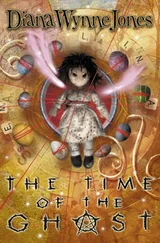1 ...6 7 8 10 11 12 ...76 The fact that many BI.il k Americans have a copy of the gene for sickle-cell haemoglobin s.iys little more than that they originated in West Africa, which we knew already. Molecular technology tells a tale of just who the 'mongrels' are. It uncovers a mass of variation around the haemoglobin genes and gives an insight into the ancestry of many Americans, black or not; including the great majority who do not carry a copy of sickle-ceil at all.
The ONA in this part of the genome varies from place to place within Africa. The sickle-cell mutation itself is associated with different sets of DNA letters in Sierra Leone, Nigeria and Zaire, probably because it arose several times. The DNA around the normal version of the gene also varies and this, too, can be used to track down where in Africa the ancestors of today's Americans came from.
That continent contains more diversity than anywhere else. Not only are its people more distinct one from the other, but different villages, tribes and nations have more individuality, because humans have been in Africa for longer than anywhere else. As a result, genes can track down the ancestry of Africans with some accuracy.
Black Americans from the north of the USA have a different set of variants from those in the south. The majority of northerners share a heritage with today's Nigerians white their southern cousins have more affinities with peoples further west. The difference in the slave markets two hundred years ago has left evidence today. Alex Haley, by comparing his genes with those from Africa, would have learned much more about his fort-fathers than he could hope to uncover I mm the records, lor any black American, a DNA test could be.1 first him as to where to search for his slave ancestors — and, for a mere $2.50, one is now on sale (although the limited information yet available on the genes of West Africa mean that any hope of finding his native village — or even tribe — is largely vain).
Many of Alex Haley's ancestors were probably not black at all. One particular variant in the Duffy blood group system is found only in West Africa. Europeans have a different version of this gene. Surveys of United States Blacks show that up to a quarter of their Duffy genes are of white origin, in many cases because of inter-racial matings during the days of slavery. Such liaisons were covert, but widespread. Even President Thomas Jefferson is said to have had several children by his slave mistress, Sally Hemings. The conjecture was proved by the discovery that one of her descendants carries DNA shared with that of the President's family (a proof so firm that it has been accepted, grudgingly, by the association of Jeffersonian descendants).
A closer look at a set of DNA clues specific to Africa or to people of European origin says more about the history of slavery. In Jamaica (where whites were a small minority), just one black gene in sixteen is of European origin. In most American cities the figure is around one in six, butin New Orleans is higher, at between a fifth and a quarter. Until 1803, Louisiana was under French, rather than Anglo-Saxon, control. Gallic racial tolerance lives on in today's genes. The differences in numbers of blacks and whites, and the small proportion of white families that have mated with blacks has transferred far fewer black genes into the American population that sees itself as white, with an overall proportion of about one gene in a hundred.
Race involves a lot more than DNA. As a result, the proportion of blacks in the United States is rising. In 1997, about thirteen per cent of Americans perceived themselves as black and, over the past two decades the country's black population has increased;it twice the rate of the white. Most of this has nothing t<> do with genes, but is a matter of identify. Thirty years.1^,0 anyone of mixed ancestry would do their best to cl.issily themselves as white. Now, with the rise of black self-esteem, many find themselves more at home as blacks. As a result, any genetic measure of admixture then and now will give different results, as a reminder that race is constructed by society as much as by DNA.
Seventeenth- and eighteenth-century England, too, had a substantial black population. It disappeared; not because it died out, but because it was assimilated. Part of its heritage is, without doubt, still around in the streets of modern Britain. Dr Johnson himself had a black servant, Francis Barber, to whom he left enough money to set up in trade. Many people around Lichfield are proud to trace their descent from him, although their skins are as fair as those of their neighbours. White Britons contain other exotic genes as well. After all, the first slaves to cross the Atlantic were the Caribbean Indians sent to Spain by Columbus in 1495 and there was a sixteenth-century fashion for bringing newly discovered peoples back to Europe. The English explorer Frobisher brought back some Eskimos in 1577 and more than a thousand American Indians (including a Brazilian king) were transported to Europe. Many of the unwilling migrants died, but some brought up families. Their legacy persists, no doubt, today; but they have been absorbed so fully into the local population that only a genetic test — or provision of a dependable pedigree — can say who bears it.
Genes have taken us back for hundred of years — for fifteen generations or so where black Americans are concerned. But they bear messages from earlier in history. Sometimes, the evidence is direct, more often indirect: but in every case it links the present with the past.
For good historical reasons, a great deal is known about the genetics of Hiroshima and Nagasaki. The Americans spent many years on a survey of whether the atom bombs had increased the mutation rate. No effect was found, but a mass of information on the genes of the two cities was gathered. Each has a cluster of rare variants not present in the other. They are relics of an ancient history. Hiroshima and Nagasaki were each founded by the amalgamation of different warring clans that lived in the region eight thousand years ago. Like tribal peoples today, they had diverged in their DNAs. The slight differences between the ancient tribes persist in the modern towns. Nagasaki was one of the few ports open to the outside world during Japan's self-imposed isolation, but has no more sign of an influx of a foreign heritage than does Hiroshima. The voices of remote ancestors echo more loudly through the two cities than do those of more recent invaders.
Because genes copy themselves, there is no need to go back to the source to find an ancestor; but, sometimes, the source has been preserved. The Egyptian pharaoh Tutank-hamun was buried at about the same time as another mummy, Smenkhare. Their blood groups can still be identified and show them to have been brothers. The first piece of human fossil DNA was found in the dried corpse of an Egyptian child, buried in the sands. It had survived for two and a half thousand years. Since then, many pieces of ancient DNA have turned up {although their analysis is confused by a tendency for contamination with modern material).
It has, nevertheless, become possible to read ancestral genes directly. Some ancient DNA, like that of the Easter Islanders, whose civilization was destroyed by constant warfare and ecological vandalism, has no equivalent in the modern world and remains, like their enigmatic statues, as the sole evidence of a people who left no posterity. Sometimes, it adds to the clues of the present. Agriculture began in Japan with the Jonion people, about ten thousand years ago, but they also spent much of their time as hunters. Farming did not take oft as a way of life, with rice as a staple diet, until the Yayoi tribes who followed them, thousands of years later. Rice was brought by the Chinese, and the Japanese argue about how many of their genes entered the country with the crop. Many believe that the immigrants drove out most of the natives; that people moved, rather than ideas. However, DNA extracted from a two-thousand-year-old Chinese burial site links its inhabitants with modern Chinese, but not with the fossil DNA of the extinct Japanese. It proves that few mainland-ers made the journey. Instead, the locals of two millennia ago, much like their modern descendants, picked up and used a new technology invented in a foreign land. Modern Japan, on the other hand, does have biological links with the Chinese, so that a movement from the mainland had an impact much later.
Читать дальше
Конец ознакомительного отрывка
Купить книгу












